2015 Theatre Archive
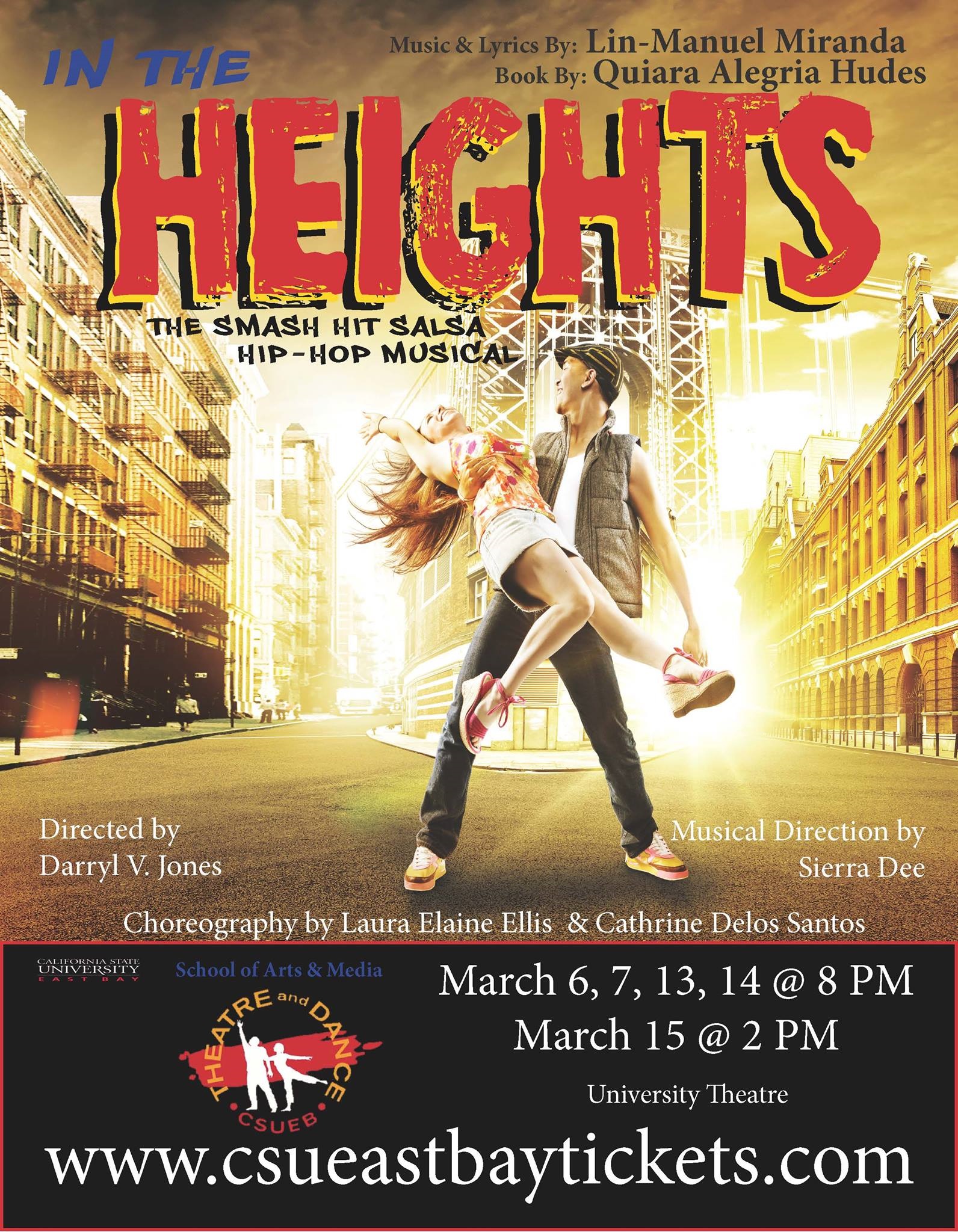
Performances were March 6, 7, 13, 14, & 15, 2015
In The Heights by Lin-Manuel Miranda & Quiara Alegria Hudes
Directed by Darryl V. Jones
Musical Direction by Sierra Dee
Choreography by Laura Elaine Ellis & Catherine Delos Santos
Location: University Theatre
“In the Heights,” the 2008 Tony award winner for Best Musical as well as three other categories, was written by composer Lin-Manuel Miranda and playwright Quiara Alegria Hudes. The first musical written by and about Latinos to win a Tony award, “In the Heights” tells the story of a vibrant community on the brink of change in New York City’s Washington Heights neighborhood, and explores themes such as the pressures of reaching for one’s dreams and the struggle to keep traditions alive. The musical draws inspiration from “West Side Story,” “Flower Drum Song,” and “Fiddler on the Roof.”
“In the Heights” broke new ground on Broadway by interweaving rap dialogue with Latin American dance and music. The musical score is a mix of salsa, merengue, hip-hop, breakdancing, and traditional Broadway musical numbers. This fusion of dance and musical styles reflects the diversity of the Washington Heights community that the story is set in.
“‘In the Heights’ is written about the Dominican and Puerto Rican-American neighborhood of Washington Heights, but it transcends the specific ethnicity. It is the classic American immigrant story, the story of a community that is under pressure, one that is changing, growing, and transforming,” said Professor Darryl V. Jones, director of the CSUEB production. “The story celebrates working hard to send children to school so they will do better than their parents who may have struggled with English. It honors becoming American, but still celebrating your ethnic and cultural heritage. For this reason, as well as the musical’s infectious music and dance, the show has developed a huge cult following of Asians, Latinos, Blacks, and Whites alike.”
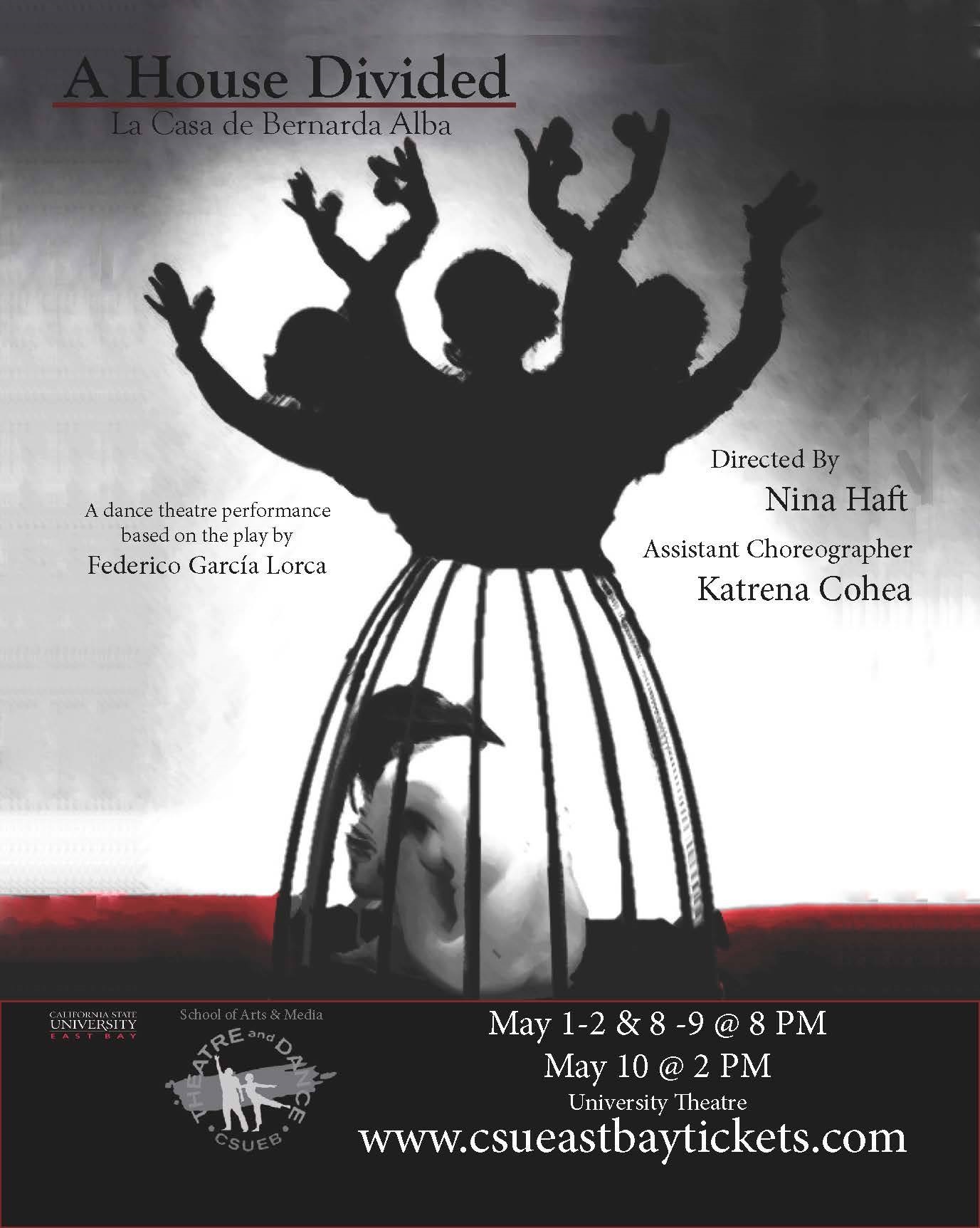
We staged "A House Divided: La Casa de Bernarda Alba," an original dance theater production May 1-2 and May 8-10, 2015
"A House Divided: La Casa de Bernarda Alba," is based on a play by Spanish author Federico Garcia Lorca. Themes of intergenerational conflict, society vs. individual, and the nature of love and longing run throughout the performance.
"Anyone who has experienced love and loss and the desire to break from tradition to follow their heart will find powerful territory in this production," said Associate Professor Nina Haft, who is directing and choreographing the production in partnership with
"A House Divided: La Casa de Bernarda Alba" incorporates contemporary and flamenco dance, physical theater, and excerpts from the original play. It is based on one of Lorca's most famous plays, the last in his "Rural Trilogy," which critiques Spanish bourgeois society and challenges the traditional roles set for women, as well as ideas about class and religion.
The language of the play is direct and raw. It explores the lives of one family of women in rural Spain in the 1930s. Matriarch Bernarda Alba has just declared an interminably long period of mourning for her deceased husband. Her five daughters yearn for love and life beyond the confines of their strict upbringing. Family servants witness the hypocrisy of this wealthy family while doing their best to remain protected from the tragedy that inevitably strikes this household of passionate women.
Lorca, now considered a cultural treasure of his country, was executed in 1936 by Spanish Nationalist forces during the Spanish Civil War.
Cal State East Bay's production of "A House Divided" was performed by members of the CSU East Bay Dance Ensemble.
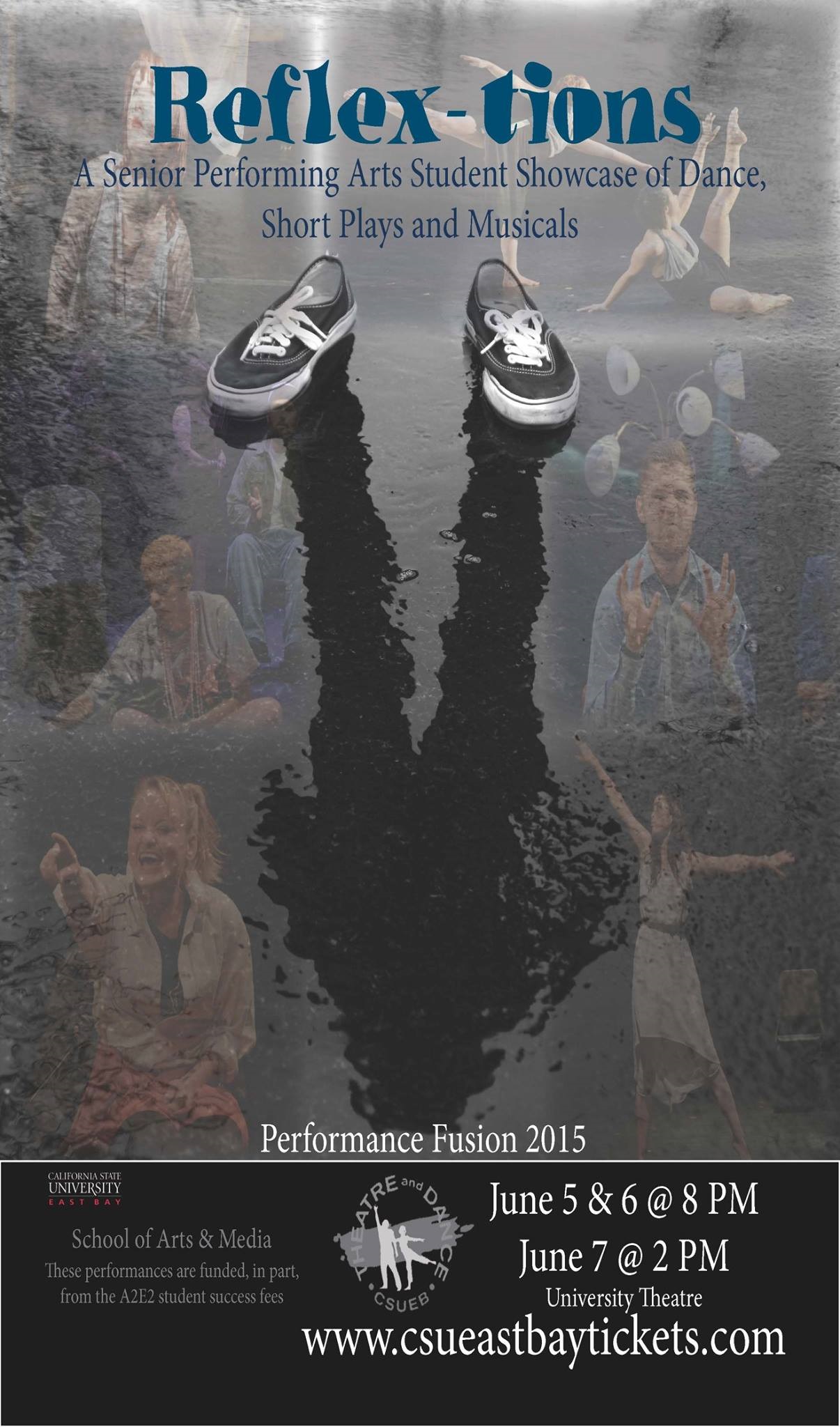
We celebrated our senior and graduating students’ work with Performance Fusion 2015 “Reflex-
“Reflex-
Nicholas Berk’s short play Benji is a rite of passage tale, showing the journey from shame to innocence, and eventually maturity for a boy growing up with autism.
Teri Lynch’s musical Human shows us how reenacting past experiences, with the help of Dialectical Behavior Theory, can help us to confront our demons and heal.
In Typecast: Again, writer and director Marie Alexandra Ibarra
Choreographer Adriana Ramos’ Sin Gracia is a dance theater interpretation of the Mexican folkloric character of La Llorona, “The Weeping Woman.” Through movement, music
Food and body image are issues that director Rebecca Soltau fearlessly broaches in her interpretation of Stephanie Alison Walker’s short play, The Chocolate Affair. Her production asks what saps us of true joy and what feeds us in life.
Cal State East Bay’s production of “Reflex-
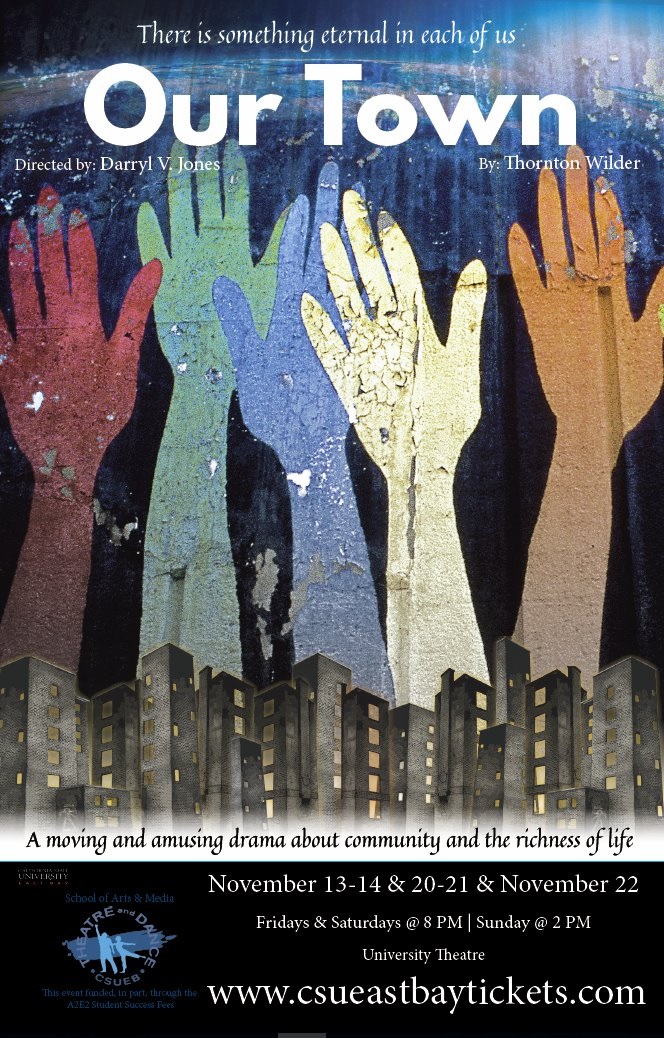
CSU East Bay’s Theatre & Dance Department presented the Pulitzer
First produced in 1938, “Our Town” quickly became a notable American contemporary classic. According to Director Darryl V. Jones, sincerity and clarity illuminate “Our Town,” reminding us in a hauntingly beautiful way that everyday life is
“This is not just a play about a quaint little New England village and the simple folk who live there,” Jones said. “It represents all of us — living in any community we might call ‘our town.’ Our production pays homage to the past but welcomes the reality of the more cultural and ethnically diverse community in which we live today. The people of the town are cast to represent a multi-cultural global community. Then too, because we all have songs that we connect to our lives, we are adding live music sung and played by the CSUEB actors themselves onstage.”
Told in three acts, the play takes place in Grover’s Corners. The stage manager and actors take us through a twelve-year span of life in this town, shining a particular light on young lovers Emily Webb and George Gibbs. Interlaced with their courtship are the day-to-day happenings of their families and other townsfolk, often humorous and sometimes bittersweet. These repetitions of daily life hold a universality that crosses generations, countries, and cultures. Audiences the world over have come to know and love the people of Grover’s Corners, and live a full life through their stories.
The play is often times done on a bare stage, as requested by the playwright, to engage the audience’s imagination. Jones is holding in part to that idea but is also adding elements to reflect the East Bay community, creating a non-time specific setting in which antiquity and modernity
Cal State East Bay’s production of Our Town was performed by an

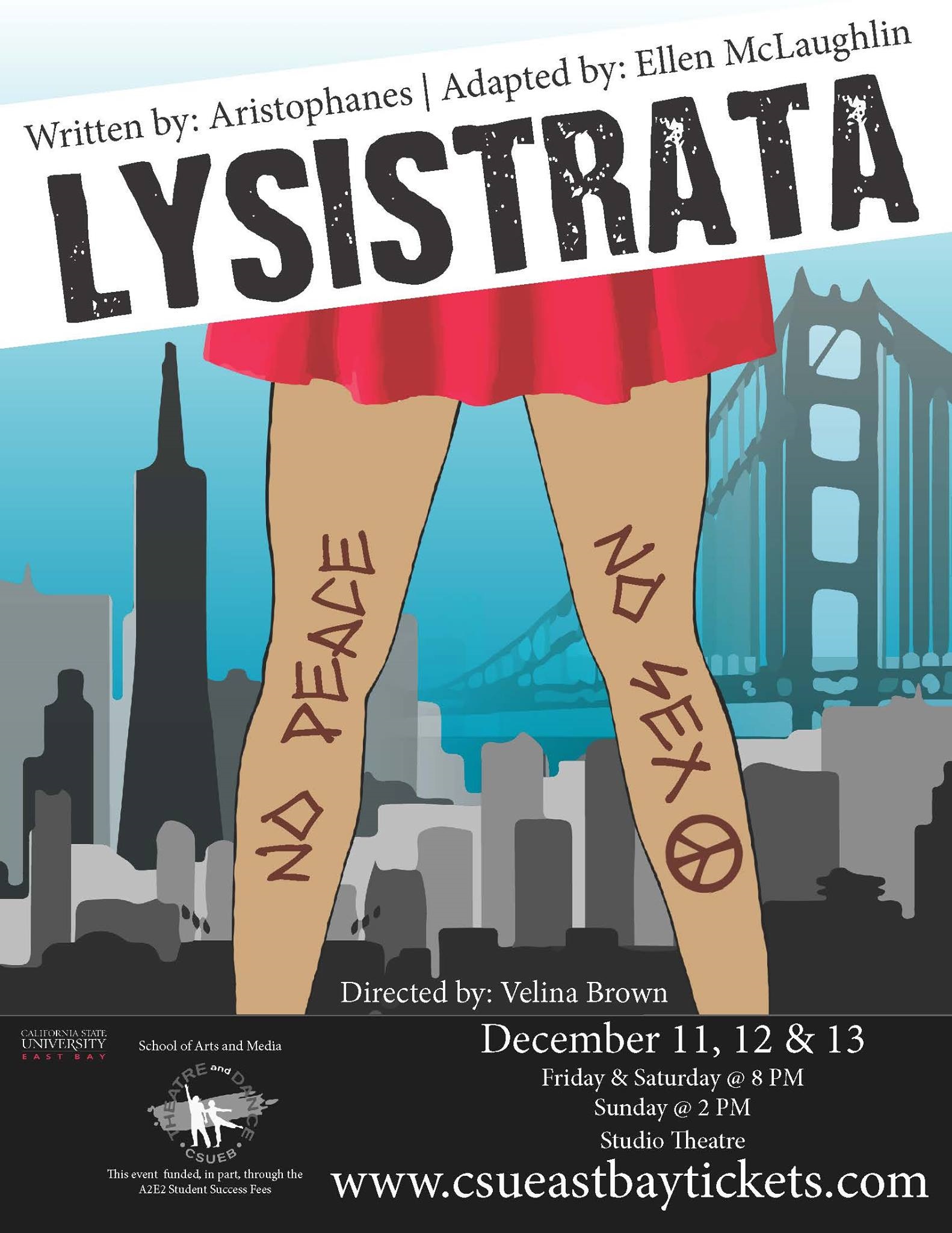
CSUEB T&D presented Aristophanes’ classic play “Lysistrata” using the contemporary adaptation by Ellen McLaughlin. Performances were Dec. 11th, 12th, and 13th, 2015.
“Lysistrata,” the ancient Greek comedy about one housewife’s mission to end a war by convincing her peers to withhold sexual activity from their husbands and lovers, was reimagined by McLaughlin in March 2003 in protest of the United States’ invasion of Iraq. It was first performed in New York City as a reading featuring well-known theater, film and TV actors.
McLaughlin’s adaptation revives the original premise of “Lysistrata” in a much shorter script while maintaining relevant, contemporary themes of politics, sex, war, and peace.
Cal State East Bay’s production was performed by an all-student cast and directed by visiting artist Velina Brown. Brown is a critically acclaimed actress, singer/songwriter
“It has been a true pleasure to introduce students to A Peek Behind the Scenes (a four-unit course) of the theater-making